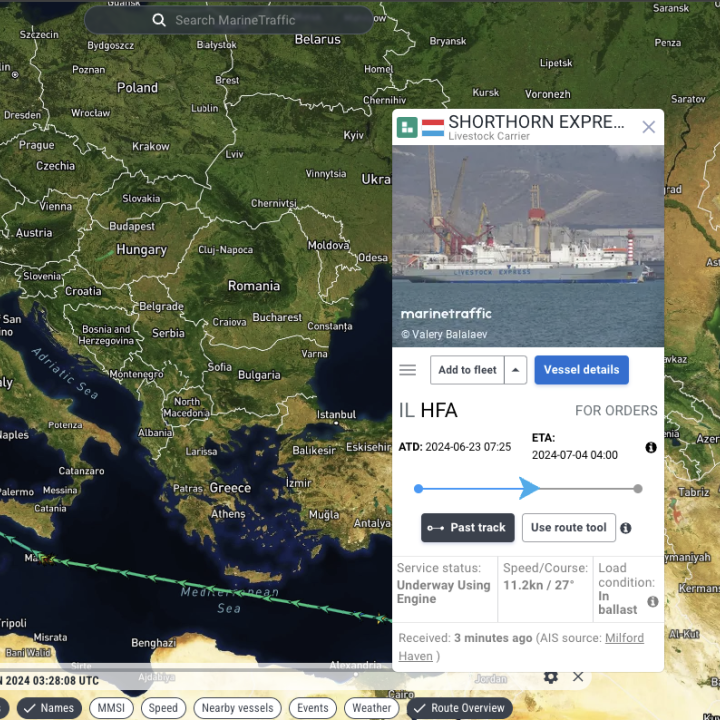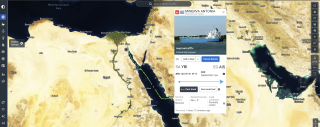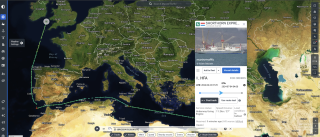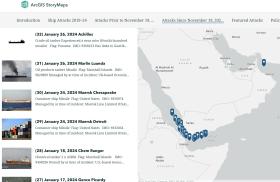
Are the Houthis Attacking Ships in the Mediterranean?

Part of a series: Maritime Spotlight
or see Part 1: Tracking Maritime Attacks in the Middle East Since 2019
Direct strikes from the Yemeni group are unlikely at the moment, but a more aggressive Hezbollah could alter the threat picture.
In recent weeks, the Houthis have made claims about targeting commercial ships in the Mediterranean Sea, including in the key Israeli port of Haifa. Yet Israel has so far intercepted missiles and drones launched from Yemen and Iraq, particularly toward Eilat, meaning that Houthi aerial weapons will likely be destroyed before they reach their targets in the Mediterranean. This is one reason such claims, based on available information, appear to be just part of the Houthi propaganda campaign for now. Another reason is that at least one shipping company has denied a Houthi claim of an attack on one of its vessels in the Mediterranean.
The recurring claims about hitting ships close to Israel or in Israel coincide with threats from Hezbollah to target Israeli ports and other critical infrastructure in the event of a wider war. It appears that the Houthi media campaign is being conducted in coordination with other groups that are considered part of the “axis of resistance,” particularly amid concerns about a larger Hezbollah-Israel conflict.
Projecting Power Through Misinformation
In May, the Houthis claimed they had targeted the Liberia-flagged LPG tanker Essex (IMO 9403877) in the Mediterranean Sea. That ship is linked to the UK-based company Zodiac Maritime, which is controlled by Israeli-born shipowner Eyal Ofer. However, according to shipping data from MarineTraffic and other sources, the tanker was in fact in Egypt on May 23 and appeared to be operating normally. Also, that month, the Houthis claimed they targeted Greece-flagged oil/chemical tanker Minerva Antonia (IMO 9380398) in the Mediterranean, but no independent sources confirmed the incident. Based on MarineTraffic data, as of July 1, 2024, this tanker was sailing in the northern Red Sea heading to Egypt’s Ain Sokhna after a visit to the Saudi Red Sea port of Yanbu, a sign that the tanker was operating normally.
Last month, the Houthis made more claims about attacking vessels in the Mediterranean, allegedly in cooperation with Iraqi armed groups. For instance, on June 22, the Houthis claimed that they attacked four vessels at the Haifa port as well as the Luxembourg-flagged livestock carrier Shorthorn Express (IMO 9167318) in the Mediterraneanen route to Haifa. The owner of the Shorthorn Express, Netherlands-based Vroon, denied the claim, telling TradeWinds: “The company would like to stress that [the] crew, its cargo and the vessel are safe and no signs of an attack were noticed. Shorthorn Express is, meanwhile, proceeding [on] its voyage to its port of destination.”
The livestock carrier was indeed at the Haifa port, but shipping data from MarineTraffic shows no unusual movements. As of July 2, the vessel had left Israel and was sailing in the direction of the Irish Sea, a clear sign that it was operating normally, as shown below.
As for the Houthi claim about targeting four ships at Haifa port, this was not confirmed by independent sources, and its veracity is questionable. While the Houthis have continued to make similar claims this month, any serious attacks at the Haifa port would have led to a prolonged suspension of maritime traffic there and a sense of panic in the shipping industry, neither of which has so far happened.
The Houthis have already gained notoriety for attacking commercial ships in the Red Sea and Gulf of Aden, sinking a few of them, killing and wounding seafarers, and disrupting global maritime traffic. Their success in these two regions since November 2023 and their ability to target at least two ships in the Arabian Sea and Indian Ocean have emboldened them, making it easy for them to claim attacks beyond their usual area of operation.
Military Capabilities Against Ships
The Houthis have a wide range of weapons, such as ballistic missiles and air-breathing cruise missiles and drones, which could pose a significant antiaccess/area-denial threat to shipping and ports in the Red Sea, Bab al-Mandab, Gulf of Aden, and Arabian Sea. However, despite the group’s claims that its Sammad-4 and Waid one-way attack drones (OWADs) have ranges in excess of two thousand kilometers, it is not likely that the Houthis have an OWAD that can reach much beyond one thousand kilometers. Based on available information, it is therefore very unlikely that they are attacking Haifa port facilities or maritime targets in the East Mediterranean directly from Yemen using drones and antiship missiles.
The distance from Haifa to known Houthi drone launch sites is two thousand kilometers in a direct line, and about 2,200 kilometers for a more realistic flight path along the Red Sea median line and eastern Sinai desert.
The Houthis might still attempt to fire some of their longer-range Qadr ballistic missiles, which can barely reach the Haifa area and cannot attack moving or relocatable targets. They could, however, compensate by launching from Iraq in cooperation with Iraqi armed groups, reducing the range required to reach Haifa to 500 kilometers or less. The Islamic Revolutionary Guard Corps could be expected to play a major coordinating and logistical role in such a franchising operation.
That said, Israeli air and missile defenses and those of other countries in the region, as well as the United States, have proved very capable of intercepting any such rocket and air-breathing threats against Israel. There is cooperation including intelligence sharing via datalink, priority emails, text messages, and telephone hotlines. This quasi-coordinated defensive network could face a new challenge if Hezbollah, with its unhindered line of sight, enters the East Mediterranean theater as part of a wider conflict with Israel. Hezbollah is not known to have anything more than Noor (C-802) and Nasr (C-704) radar-guided antiship cruise missiles in its arsenal, with a maximum range of 120 kilometers. However, it likely already has, or may soon have, almost any weapons in the arsenals of the Houthis or the Popular Mobilization Forces in Iraq.







